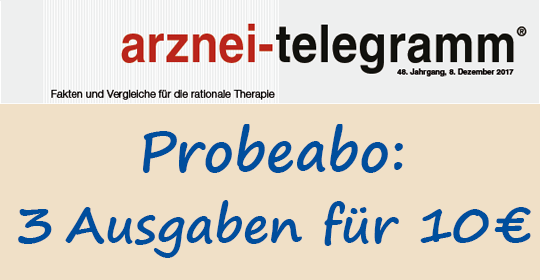Translation of a-t 2023; 54: 105-6
IN BRIEF
Example topical diclofenac – reducing the environmental impact of drugs
According to data from the German Environment Agency, more than 30,000 tonnes of mostly synthetically produced active substances are used in human medicine in Germany each year. Many of these medicinal products are excreted mostly unchanged after passing through the body, enter the environment and food chain and can trigger effects in fish, birds and other "non-target organisms", some of which correspond to known adverse effects in human medicine.1 The extent to which certain birds react sensitively to the non-steroidal anti-inflammatory drug (NSAID) diclofenac (VOLTAREN, generics) was first identified around 25 years ago in Spain, for example, due to the mass death of vultures from kidney failure. They had eaten meat from cattle that had previously been treated with diclofenac.* Other birds of prey and owls, cranes, storks and others are also at risk.2 The total consumption of diclofenac has been falling slowly but continuously here in Germany for years (from 89 t in 2011 to 78 t in 2021). However, the use has shifted to over-the-counter topical applications of the NSAID, which have almost doubled in the same period of time (from 26 t to 51 t). 1 In some European surface waters, diclofenac concentrations of 4 µg/l have been measured. These values are more than ten times the active substance quantity considered to be harmful to animals and plants. 1 Diclofenac can also accumulate in the bile and other organs of fish and reach concentrations that are more than 500 times higher than in the water.3 According to the summary of product characteristics,4 only 6% of topical diclofenac is absorbed percutaneously in the frequently used gel preparations. Thus, the main quantity ends up in the waste water by washing the hands after application, showering or doing laundry, without ever getting into the body. However, the three-stage treatment plants existing in Germany only remove between 10% and 50% of the NSAID from the waste water. Users can contribute to reducing the levels of the substance getting into the water by wiping their hands with a paper towel before washing them. Assuming meticulous wiping**, this can reduce the quantity of diclofenac that remains on the hands after applying the gel and would get into the waste water by two thirds, according to a study.5 The paper towels used are disposed of in household waste, which is incinerated in most areas. The summary of product characteristics for external diclofenac4 we reviewed did not contain any reference to the measures to protect the environment, including for the original VOLTAREN, even though two of the authors of the study work for the supplier, GSK.5 In addition to the relatively laborious wiping procedure, we feel that it is advisable to limit the use of the external agent and to avoid the much-advertised self-medication at least for minor symptoms. In general, the product information should routinely make reference to the known or possibly uncertain environmental damage of the medicinal product in question, –Ed.
| * | Diclofenac is not authorised as a veterinary medicinal product in Germany.1 |
| ** | In each case, after rubbing the palms, the back of the hand, the fingers and the space between the fingers, the paper towel should be folded in the middle so that the external agent wiped off cannot be transferred to the next surface of the hand to be wiped. |
| 1 | MAACK, G.: UMID (Environment and Humans - Information Service) 2023; No. 1: 5-14; https://a-turl.de/jasq |
| 2 | CUTHBERT, R. et al.: Biol. Letters 2007; 3: 90-3 |
| 3 | MEHINTO, A.C. et al.: Environmental Science Technol. 2010; 44: 2176-82 |
| 4 | e.g. GSK: summary of product characteristics for VOLTAREN Emulgel 1.16% gel, version of June 2022 |
| 5 | BIELFELDT, S. et al.: Chemosphere 2022; 292: 133350 (4 pages) |
© arznei-telegramm (Berlin/Germany), December 2023, protected by copyright laws.
Autor: Redaktion arznei-telegramm - Wer wir sind und wie wir arbeiten
Diese Publikation ist urheberrechtlich geschützt. Vervielfältigung sowie Einspeicherung und Verarbeitung in elektronischen Systemen ist nur mit Genehmigung des arznei-telegramm® gestattet.
